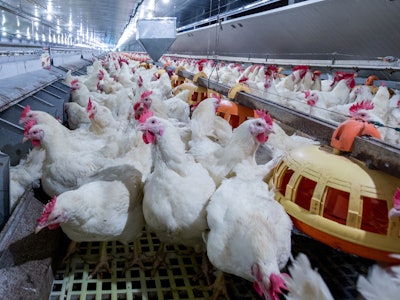
Defining the amino acid requirements in broiler breeder diets can be difficult due to the varying needs for maintenance, body weight gain and egg production; differences in the requirements being found between studies; and generally low lysine and protein levels in breeder feeds.
Relative amino acid requirements are different for maintenance, body mass composition and egg production in broiler breeders, meaning that requirements and optimum dietary nutrient ratios can change over time, explained Cargill Animal Nutrition and Health Senior Technology Lead Henk Enting at the 2024 Poultry Science Association (PSA) annual meeting.
Additionally, there is a large variation in published lysine and amino acid requirements in broiler breeders. According to Enting, those differences could potentially depend on the processing or feeding method used. Enting recommends that producers follow results from performance studies rather than modeling exercises.
Amino acids in the laying period
Lysine and other amino acid requirements for the laying period have increased over time and recent estimates for lysine are close to recommended levels by breeding companies. However, recommendations for amino acids in the rearing period have moved in the opposite direction and decreased to control weight gain and increase body fat composition, he added.
Enting added that there is some room to decrease digestible lysine and crude protein during the laying period without negative effects on performance. However, there is potential for hatchability to be negatively impacted at low dietary protein levels of 10-11%.
Amino acids in the rearing phase
In published research, continued Enting, different energy-to-amino-acid ratios in the rearing period that changed body composition affected the amount of feed that is required to maintain body weight targets during laying, suggesting that body composition has a significant impact on energy requirements in broiler breeders.
Therefore, recommendations for lysine to energy ratios in the rearing period have become lower to optimize body composition. In trials run by Enting and his research team, reducing lysine levels during the rearing period results in a lower breast meat yield, higher body fat deposition and can improve laying persistency.
“The optimum lysine-to-energy level will depend on fleshing and body fat targets in the rearing phase,” he stated.



















